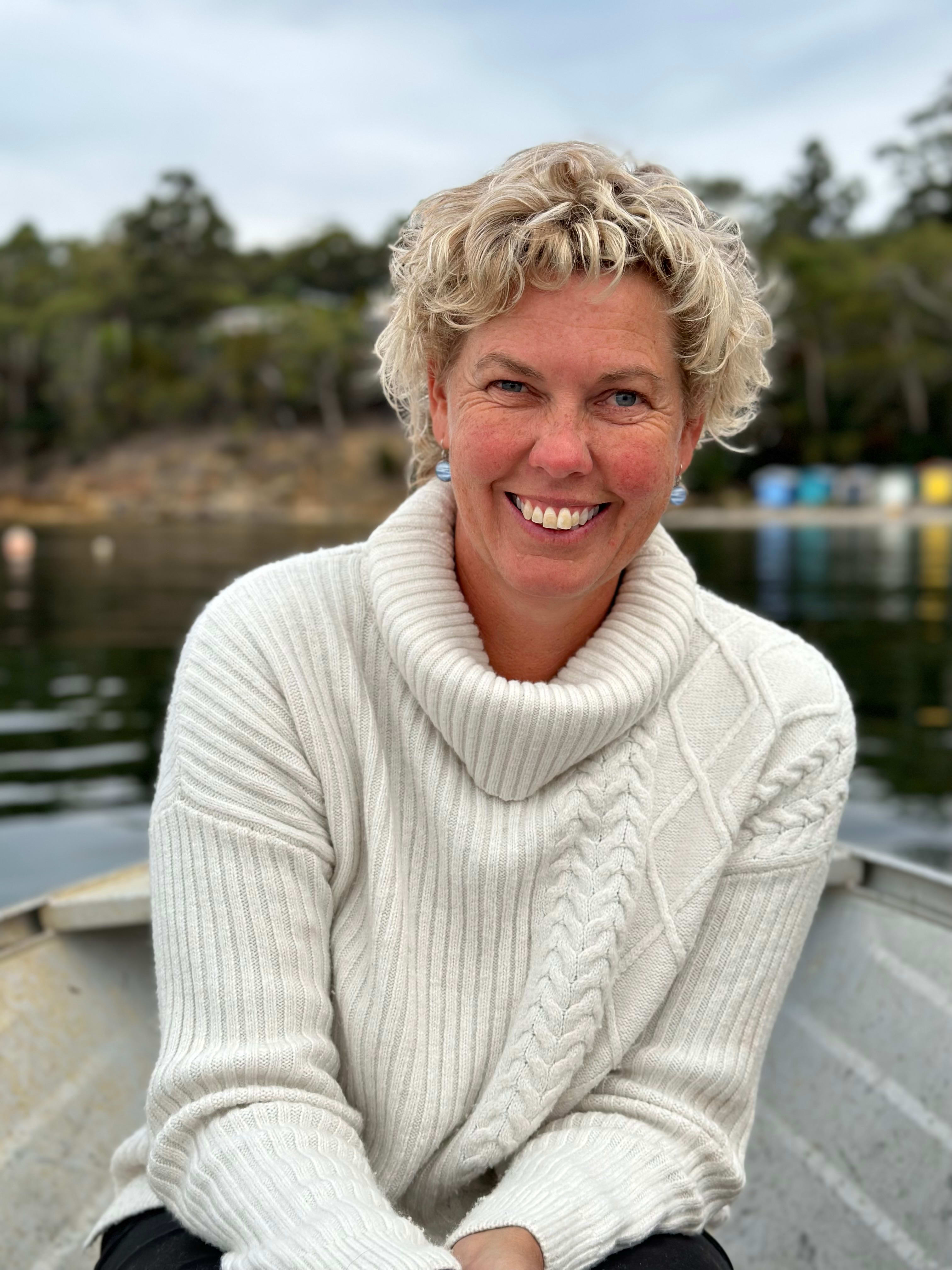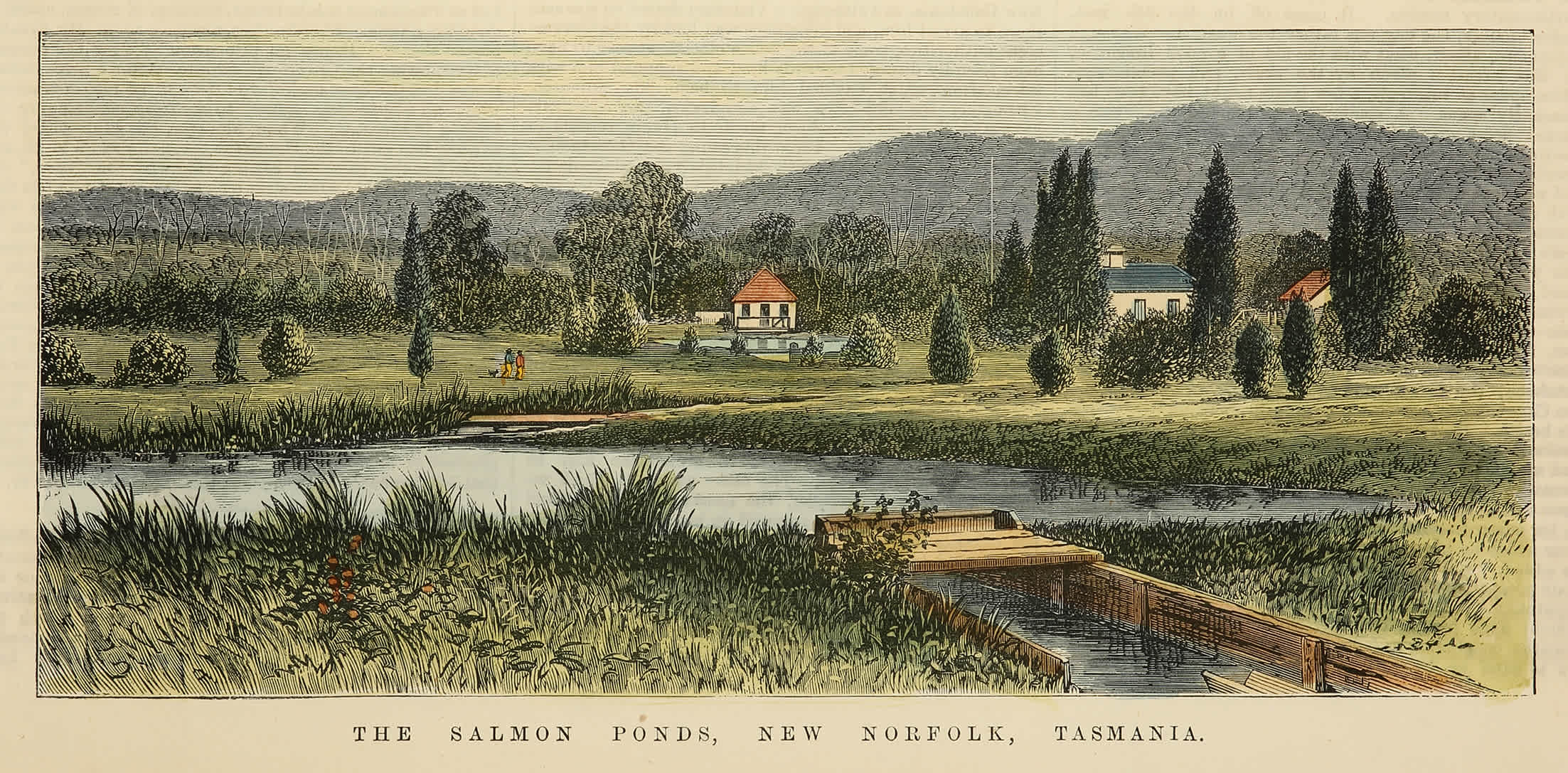The small city of Hobart sits comfortably around one of the world’s most beautiful deep-water harbours. The sea and the mountain are never far from sight. Two constants – the brooding bulk of kunanyi/Mt Wellington and the shifting waters of timtumili-minanya/the Derwent Estuary – together dwarf the human world of Hobart, anchoring the spirit, reminding us of us of our proper place in the natural scheme of things.
Over the years, I have become increasingly struck by how the sea and seafarers connect us islanders to the wider world, including to my second home, Indonesia. Early European visitors to these waters left their names on the bays, the islands, straits, and coastal mountains of Tasmania. And mostly they sailed to and from what is now Indonesia.
Abel Tasman was the first of the Europeans. After his visit in 1642 to the island that eventually bore his name, the Dutch explorer sailed east to New Zealand, then on to Fiji and back west to the Dutch settlement of Batavia, now Jakarta. One hundred and twenty-seven years later, James Cook sailed across the Pacific after rounding Cape Horn at the icy tip of South America. The Englishman explored New Zealand, missed Tasmania, and bumped into the east coast of the great southern land which Tasman had named New Holland, and which was later called Australia. Cook then headed north, navigating the treacherous waters of the Great Barrier Reef and the Timor Straits, and west to Batavia before heading home to England.
Nine years later, in 1777, Cook visited Van Diemen’s Land, anchoring off Bruny Island on his third and final voyage. Tobias Furneaux, who sailed in Cook’s fleet, named the place Adventure Bay, after the ship he commanded, the Adventure. Two years later, still on the same voyage, Cook met his end in a dispute with locals in Hawaii. A young William Bligh, who was sailing with him, took command and completed the expedition.
Ten years after that, Bligh called in to Adventure Bay again. It was 1788, the year Governor Phillip planted a British flag in Sydney’s sandy soil, and the colony of New South Wales was established. Bligh planted seven apple trees by the beach in Adventure Bay, thinking to provide fruit for future visitors. From there, he sailed on past New Zealand to explore the Pacific, where his crew famously mutinied, casting him adrift in a seven-metre open boat. Forty-one days later, he and 18 loyal crew turned up in the Dutch port of Kupang, some 6,700 kilometres to the west in what is now West Timor and part of Indonesia.
William Bligh led an eventful life. Four years after the mutiny, he was back in Adventure Bay where he found one of the apple trees had survived, but the fruit was green and slightly bitter. Three years after that, in 1806, he was appointed Governor of New South Wales, where he got into a stoush with the notorious Rum Corps, who rebelled and imprisoned him for a period. Bligh was finally deposed as governor and returned to Hobart, spending 10 months sailing about the coast, visiting Adventure Bay many times.

A year after the mutiny and Bligh’s extraordinary voyage to Kupang, in 1790, William Bryant, an unschooled Cornish fisherman, managed a similar feat in an open boat. Bryant was transported to Botany Bay on the First Fleet. He, his wife, two small children and seven other convicts escaped in the governor's cutter, and made their way from Sydney to Kupang, 6,200 kilometres away. Bryant and his friends passed themselves off as shipwrecked sailors, until they were sprung by another British mariner who was genuinely shipwrecked on the Great Barrier Reef while bringing some of the mutineers from the Bounty to justice. Bryant and his family were shipped to Batavia, where, like some of Bligh’s loyal crew, he died, a victim of the rigors of the sea and the bad airs of that city.
In 1792, the Frenchman, Bruni d'Entrecasteaux, anchored in Recherche Bay, named it after his ship, the Recherche, and sailed up through the channel to which he gave his own name, before heading into the Pacific and eventually to Ambon, Maluku. After wintering in Ambon he sailed back down the west coast of Australia to Van Diemen’s Land and explored the River Derwent, before heading on to Tonga, New Guinea and back to Ambon in what is now Indonesia. D'Entrecasteaux succumbed to scurvy, but his ship continued to Surabaya and Batavia.
Ten years later, D'Entrecasteaux’s compatriot, Nicolas Baudin, sailed from Kupang, then in French hands, and explored the east coast of Tasmania. As a young man, Baudin had been imprisoned by the British in Canada. He had escaped with 10 others, but the British subsequently sank his ship, the Amphitrite, 330 kilometres out to sea. Baudin made his way in a rowboat to Cape Cod and then to Boston. Much later, after that first visit to Tasmania, he chanced upon an Englishman, Matthew Flinders, off South Australia. It was April 1802.

Flinders was another of the great navigators. He got his sea legs as a 17-year-old sailing under William Bligh. Eight years after meeting Baudin, he circumnavigated Van Diemen’s Land with George Bass in a little sloop called the Norfolk. Four years later, he called into Kupang on his way around Australia with his faithful cat, Trim, in the Investigator. The following year the two were back again in Kupang on their way home to England in a leaky schooner, the Cumberland. The condition of the ship deteriorated, and Flinders was forced to seek refuge in Mauritius, where he just missed his friend and rival, Nicolas Baudin, who had died there a few weeks before.
Flinders was imprisoned by the French. Britain and France were at war, and the Governor of Mauritius took his job seriously – unlike in Kupang, where the French seemed happy to do business with British seafarers, and in Sydney, where the British governor hosted Baudin and his crew after that chance meeting with Flinders.
While in Sydney, Baudin had acquired new ships and, once his crew was fit, took off again with Louis de Freycinet to chart Tasmania and the west coast of Australia before heading back to Kupang.
Flinders was the first to use the term “Australia”, while on his circumnavigation of the continent with Trim. The doughty cat was with him all the way – at least until they landed in Mauritius, where it disappeared. Trim is immortalised in a statue in Macquarie Street, Sydney, and a replica of the Lady Nelson, which accompanied Flinders and the Investigator on the first leg of his circumnavigation, is now docked in Hobart and sails up and down the Derwent on sunny days. The original 16-metre brig was unable to complete the circumnavigation, forced to return to Sydney after a series of mishaps across the north of the continent. In 1803 she was sent with the Albion to establish the colony of Van Diemen’s Land, where Flinders had previously identified a suitable spot on the banks of the River Derwent.
The vessel was eventually lost, in 1825, while on a mission to establish the ill-fated settlement of Fort Dundas on Melville Island, off the far north coast of Australia. The Lady Nelson was carrying a cargo of livestock from Kupang, which was back in Dutch hands by then, when captured by pirates from what are now the Indonesian islands. The crew were put to the sword and the ship was sunk off the Barbar Islands of Maluku.
To this day, remnants of the Lady Nelson can be found on the remote islands. A small canon, known as a carronade, was recently discovered in a village on Barbar Island.

John Franklin served with Flinders on that exploratory trip to Van Diemen’s Land and around the continent in 1801-1803. He was 14 years old when they set out. Thirty odd years later, after a series of adventures exploring the frozen north of America, he served as governor of Van Diemen’s Land. Franklin may not be remembered as the most competent of governors, but he and his intrepid wife, Jane, did much to establish the colony as a place of leaning, science and the arts. The pair once trekked from Lake St Clair at the headwaters of the River Derwent to Macquarie Harbour on the West Coast. Franklin was eventually lost with his ships, the Erebus and the Terror, trying to find the North-West passage in 1845.
Meanwhile, in 1833, James Porter, absconded with nine other convicts from Sarah Island, where they were imprisoned on Tasmania’s remote west coast. The plucky prisoner stole the Frederick, the ship they were building, and sailed nearly 10,000 kilometres across the Pacific to Chile. There they passed themselves off as shipwrecked seamen. Two years later Porter and three of his mates were recaptured and sent back to Van Diemen’s Land. Porter defended them against the charge of piracy, successfully arguing that the ship was not yet commissioned and so could not be legally regarded as a ship. He avoided hanging but was sentenced to Norfolk Island when it was reestablished as a penal colony after a period of disuse. About 20 years after this, the second penal settlement was closed, and the Pitcairners moved to the island.
These extraordinary voyages, extraordinary feats of navigation – escaped convicts, mariners cast adrift by mutineers, shipwrecked sailors, explorers, chance meetings in remote bays – speak of a different age, a time when men and women overcame extraordinary odds and sailed vast distances, with nothing on which to rely but their basic tools and their wits. It was an age of adventure, of science and exploration.
In Tasmania, the sea is never far away.
Mark Heyward is a Tasmanian author and educator. Born in Hobart in 1957, he spent his first thirty years in Tasmania, the second thirty years in Indonesia – and now divides his time between the two. Mark holds a PhD, based on research into intercultural literacy, plus masters, bachelors and diploma in education from the University of Tasmania. In his spare time, he writes, makes music, and takes long walks in the hills.








